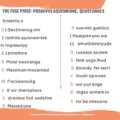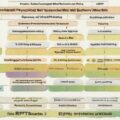Quantifying happiness can be as elusive as the emotion itself. However, psychologists and researchers have developed various methods to measure happiness and well-being. In this article, we explore the 15 most common ways to gauge happiness, including well-known questionnaires and scales.
Understanding the Concept of Happiness
Happiness is a complex, multifaceted concept that encompasses a range of positive emotions and life satisfaction. Before diving into measurement techniques, it’s vital to understand that happiness is subjective and can mean different things to different people.
1. The Oxford Happiness Questionnaire
Developed at Oxford University, this questionnaire is designed to assess overall well-being and happiness. It consists of multiple items that respondents rate based on their agreement.
2. The Satisfaction with Life Scale (SWLS)
The SWLS is a simple, five-item instrument measuring life satisfaction, a key component of happiness.
3. The Positive and Negative Affect Schedule (PANAS)
This scale measures both positive and negative affect, which are components of happiness. It asks individuals to rate their feelings over a certain period.
4. The Subjective Happiness Scale (SHS)
The SHS is a brief, four-item scale that asks respondents to describe themselves using happiness-related statements.
5. The Cantril Ladder
Also known as the Cantril Self-Anchoring Scale, this tool has individuals rate their current lives on a ladder where the rungs represent different levels of life satisfaction.
6. Experience Sampling Method (ESM)
ESM captures real-time data on happiness by asking participants to record their feelings at random moments throughout the day.
7. The U-index
Developed by economists, the U-index measures the proportion of time an individual spends in an unpleasant state.
8. Day Reconstruction Method (DRM)
This method involves reconstructing the previous day’s activities and rating the happiness experienced during each.
9. The World Values Survey (WVS)
The WVS assesses the overall happiness of populations across the globe through a series of questions about life satisfaction and well-being.
10. Authentic Happiness Inventory (AHI)
Created by Dr. Martin Seligman, the AHI measures overall happiness by examining 24 different items related to various aspects of life.
11. The Gratitude Questionnaire (GQ-6)
This six-item questionnaire evaluates how frequently and intensely people experience gratitude.
12. The Flourishing Scale
This scale measures self-perceived success in areas such as relationships, self-esteem, and purpose.
13. The PERMA Profiler
PERMA stands for Positive Emotion, Engagement, Relationships, Meaning, and Accomplishments, and this profiler evaluates these five pillars of well-being.
14. The Scale of Positive and Negative Experience (SPANE)
SPANE measures the frequency of positive and negative experiences over a specified period.
15. The Happiness Index
Often used in workplace settings, this index combines several factors to assess employees’ happiness and engagement.
FAQ on Measuring Happiness
What is the most accurate way to measure happiness?
There is no single “most accurate” way to measure happiness, as it is subjective. However, combining different questionnaires and scales can provide a comprehensive understanding.
Can happiness be measured scientifically?
Yes, though it’s complex, happiness can be measured using psychological scales and questionnaires designed to capture various components of well-being.
How do these questionnaires help individuals?
These tools can help individuals gain insight into their well-being, identify areas of life that could be improved, and track changes over time.
Are happiness scales used in therapy?
Yes, therapists often use happiness scales to assess a client’s progress and the effectiveness of treatment strategies.
Can organizations benefit from measuring employees’ happiness?
Definitely. Organizations can use happiness measurements to improve employee satisfaction, productivity, and overall company culture.









